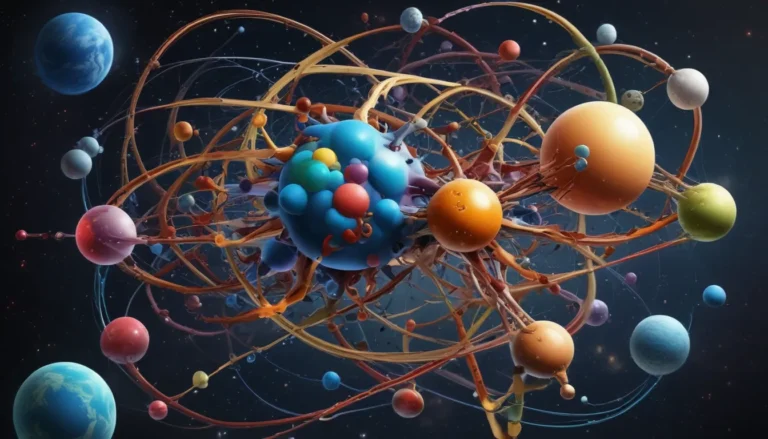A Note About Images: The images used in our articles are for illustration purposes only and may not exactly match the content. They are meant to engage readers, but the text should be relied upon for accurate information.
Are you curious to unravel the mysteries of electrophilic substitution reactions? Dive into the captivating world of chemistry and discover the extraordinary facts that surround this fundamental concept. From understanding the mechanisms behind these reactions to exploring their diverse applications, this article is your gateway to a fascinating journey through the realm of electrophilic substitution. Join us as we delve into the intricacies of this phenomenon and uncover its profound significance in the field of chemistry!
The Essence of Electrophilic Substitution
Electrophilic substitution serves as a cornerstone in organic chemistry, driving the synthesis and transformation of organic molecules. In this intriguing process, an electrophile, craving electrons, replaces a hydrogen atom in an organic compound, giving rise to a new product with distinct properties and functionalities.
Delving Deeper into Electrophilic Substitution Reactions
Let’s explore some key insights into the world of electrophilic substitution:
- Electron Dance: Electrophilic substitution is akin to a game of musical chairs in organic compounds, where an electron-hungry guest takes the place of an existing atom, reshaping the molecule.
- Diverse Applications: These reactions are not merely confined to the laboratory; they find practical applications in pharmaceuticals, materials science, and various other industries, underpinning the foundation of modern chemistry.
Unveiling the Marvels of Electrophilic Substitution
Now, let’s embark on a journey to uncover some extraordinary facts about electrophilic substitution reactions:
- Fundamental Concept: Electrophilic substitution stands at the core of organic chemistry, orchestrating the intricate dance of atoms within molecules.
- Electron Dynamics: Through the interplay of electron-deficient species, electrophilic substitution brings about the transformation of organic compounds, fueling the creation of new molecules.
- Aromatic Affinity: Aromatic compounds, like benzene, exhibit a remarkable propensity for electrophilic substitution due to their electron-rich nature, paving the way for diverse reactions.
- Mechanistic Variations: The mechanisms of electrophilic substitution, ranging from addition-elimination to elimination-addition, offer a fascinating glimpse into the nuances of these reactions.
- Exemplary Reactions: Nitration and halogenation serve as iconic examples of electrophilic substitution, showcasing the versatility and utility of these reactions.
- Isomeric Intrigues: Electrophilic aromatic substitution can lead to the formation of multiple isomers, adding a layer of complexity to the chemistry of aromatic compounds.
- Substituent Effects: The presence of electron-donating or electron-withdrawing groups can influence the reactivity of electrophilic substitution reactions, shaping the outcomes of these processes.
Navigating the Realm of Electrophilic Substitution
Let’s further explore the realm of electrophilic substitution:
- Classic Applications: Friedel-Crafts reactions offer a classic example of electrophilic substitution, demonstrating the versatility of these reactions in organic synthesis.
- Heteroaromatic Adventures: Heteroaromatic compounds, featuring non-carbon atoms within aromatic rings, exhibit their own captivating reactions in electrophilic substitution.
- Regioselective Refinements: The regioselectivity of electrophilic substitution reactions highlights the precise nature of these reactions, governed by electron density and steric hindrance.
- Pharmaceutical Pursuits: The synthesis of pharmaceuticals benefits greatly from electrophilic substitution, enabling the tailored introduction of functional groups into organic molecules.
- Catalytic Collaborations: Lewis acids play a pivotal role as catalysts in electrophilic substitution, enhancing reaction rates and facilitating the formation of electrophiles.
- Reversible Realities: Under specific conditions, electrophilic substitution reactions can be reversed, showcasing the dynamic nature of these chemical transformations.
- Research Frontiers: The extensive study of electrophilic substitution reactions in organic chemistry research underscores the ongoing quest for innovation and discovery in this area.
Understanding the Significance of Electrophilic Substitution
In essence, the study of electrophilic substitution is not merely an academic pursuit but a gateway to unlocking the potential of organic chemistry. By unraveling the intricacies of these reactions, chemists gain invaluable insights into the behavior and reactivity of organic compounds, paving the way for breakthroughs in drug development, material design, and technological advancements.
Embark on an Enriching Journey
As we conclude our exploration of the remarkable world of electrophilic substitution, we invite you to delve deeper into the wonders of chemistry. Whether you’re a seasoned chemistry enthusiast or a curious learner, the captivating realm of electrophilic substitution promises a wealth of knowledge and discovery.
FAQs: Unveiling the Mysteries
- What is electrophilic substitution?
-
Electrophilic substitution is a pivotal reaction in organic chemistry, where an electron-deficient species replaces an atom or group in a molecule through a series of transformative steps.
-
How does electrophilic substitution occur?
-
Electrophilic substitution unfolds through the interaction of an electrophile and a nucleophilic site in the substrate molecule, culminating in the replacement of the original atom or group.
-
Why is electrophilic substitution important in organic synthesis?
-
Electrophilic substitution plays a vital role in organic synthesis by enabling the introduction of diverse functional groups into aromatic compounds, facilitating the creation of tailored molecules with specific properties.
-
Can electrophilic substitution occur in non-aromatic compounds?
-
While commonly observed in aromatic systems, electrophilic substitution can also manifest in non-aromatic compounds under specific conditions, showcasing the versatility of this reaction mechanism.
-
Are there any challenges associated with electrophilic substitution?
- Regioselectivity and reaction conditions pose challenges in electrophilic substitution, requiring meticulous control and refinement for optimal outcomes in organic synthesis.
Join us in the Quest for Knowledge
As we part ways, remember that the world of chemistry holds boundless wonders waiting to be explored. Whether you’re drawn to the mysteries of organic reactions, the elegance of molecular structures, or the enigmatic properties of chemical compounds, your journey into the realm of chemistry promises endless fascination and discovery. Embrace the joy of learning and embark on an enriching quest for knowledge in the captivating world of chemistry!






